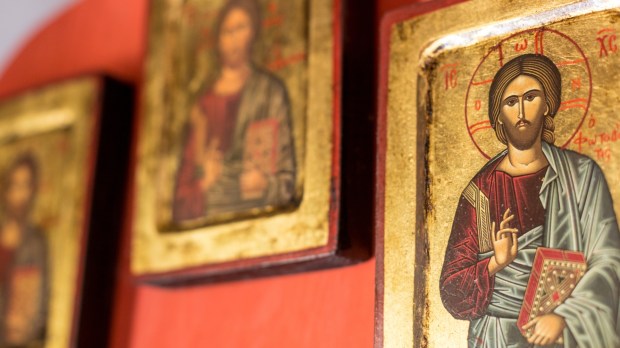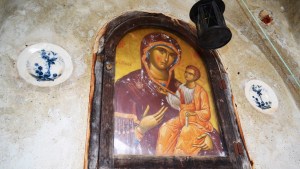Lenten Campaign 2025
This content is free of charge, as are all our articles.
Support us with a donation that is tax-deductible and enable us to continue to reach millions of readers.
In the Old Testament, it was not possible to create images of God, as God did not have a “face” that could be accurately depicted.
Only with the incarnation of Jesus Christ were we able to begin creating sacred images that gave us a small glimpse of the glory of God.
Since then humans have delved ever deeper into the art of crafting sacred images that lift our minds and hearts to God.
The Gospel in images
The Catechism of the Catholic Church summarizes the theology behind sacred images in its section on the liturgy:
The sacred image, the liturgical icon, principally represents Christ. It cannot represent the invisible and incomprehensible God, but the incarnation of the Son of God has ushered in a new “economy” of images: Previously God, who has neither a body nor a face, absolutely could not be represented by an image. But now that he has made himself visible in the flesh and has lived with men, I can make an image of what I have seen of God . . . and contemplate the glory of the Lord, his face unveiled.
CCC 1159
Often what artists try to accomplish with their art is to relay the Gospel in images, rather than words:
Christian iconography expresses in images the same Gospel message that Scripture communicates by words. Image and word illuminate each other: We declare that we preserve intact all the written and unwritten traditions of the Church which have been entrusted to us. One of these traditions consists in the production of representational artwork, which accords with the history of the preaching of the Gospel. For it confirms that the incarnation of the Word of God was real and not imaginary, and to our benefit as well, for realities that illustrate each other undoubtedly reflect each other’s meaning.
CCC 1160
Even depictions of saints are meant to point us back to Jesus Christ:
All the signs in the liturgical celebrations are related to Christ: as are sacred images of the holy Mother of God and of the saints as well. They truly signify Christ, who is glorified in them. They make manifest the “cloud of witnesses” who continue to participate in the salvation of the world and to whom we are united, above all in sacramental celebrations. Through their icons, it is man “in the image of God,” finally transfigured “into his likeness,” who is revealed to our faith. So too are the angels, who also are recapitulated in Christ:
CCC 1161



